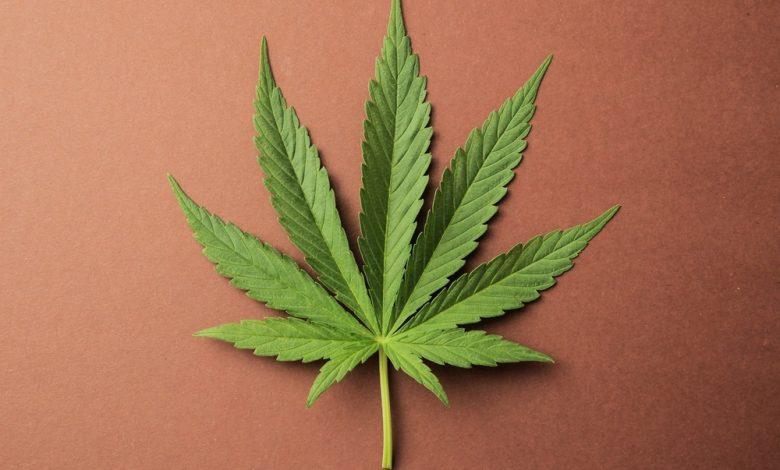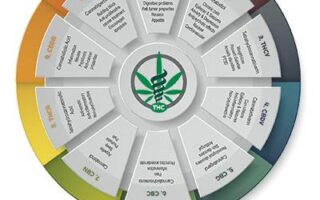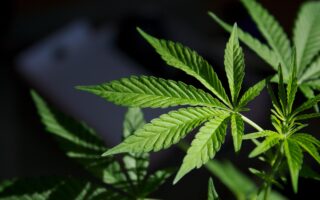Cannabis vs. Marijuana: Unraveling the Green Enigma
In the sprawling landscape of modern culture, few plants ignite as much dialogue and debate as cannabis. Commonly referred to as marijuana, this versatile botanical has transcended its historical stigmas to emerge at the forefront of conversations about health, legal reform, and lifestyle. Yet, the terms “cannabis” and “marijuana” are often used interchangeably, leading to confusion and misunderstanding. In this article, we aim to peel back the layers of terminology, exploring the distinctions, similarities, and cultural implications of these two terms. Whether you are an enthusiast, a curious newcomer, or simply seeking to deepen your understanding, join us on a journey through the rich and complex world of cannabis, as we navigate its many facets and the ever-evolving discourse surrounding it.
Table of Contents
- Understanding the Terminology: Cannabis and Marijuana Explained
- The Historical Context: Tracing the Roots of Cannabis Use
- Medical versus Recreational: Navigating the Applications of Cannabis
- Regulatory Landscape: Insights on Legal Status and Market Trends
- Q&A
- In Summary
Understanding the Terminology: Cannabis and Marijuana Explained
When delving into the world of cannabis, it’s essential to clarify its terminology to navigate this complex subject effectively. Cannabis refers to the broader plant genus that includes various species, primarily Cannabis sativa, Cannabis indica, and Cannabis ruderalis. These plants contain hundreds of chemical compounds called cannabinoids, with the two most notable being tetrahydrocannabinol (THC) and cannabidiol (CBD). While THC is responsible for the psychoactive effects commonly associated with the term, CBD is often praised for its therapeutic benefits without the high. Understanding these components helps demystify the diverse applications and effects associated with cannabis.
On the other hand, marijuana is a term that typically refers to the dried flowers and leaves of the cannabis plant that are specifically cultivated for recreational or medicinal use. The nomenclature often varies based on legality and cultural context, leading to some confusion. In various regions, marijuana may encompass strains high in THC intended for adult use, while terms like hemp are used to describe cannabis plants with less than 0.3% THC, primarily productive for industrial applications such as textiles and biofuels. The distinction between marijuana and hemp is not just semantic; it has significant implications on legality, cultivation practices, and societal perceptions.
| Term | Definition | Key Components |
|---|---|---|
| Cannabis | A genus of flowering plants that includes various species. | THC, CBD, Other Cannabinoids |
| Marijuana | Dried flowers and leaves of the cannabis plant, cultivated for use. | High THC content, Variety of strains |
| Hemp | A variety of cannabis cultivated for industrial purposes. | Low THC content, Fibers, Seeds |
The Historical Context: Tracing the Roots of Cannabis Use
The journey of cannabis as a plant intertwined with human culture can be traced back thousands of years. Ancient Eastern civilizations are often credited with some of the earliest uses of cannabis for both medicinal and ceremonial purposes. Archaeological evidence suggests that the earliest known use of cannabis seeds dates back to around 500 BC in regions of present-day China, where it was utilized for its fibrous properties in textiles as well as for its psychoactive effects in shamanistic rituals. Furthermore, the ancient Egyptians cultivated cannabis, documenting its applications in papyrus texts, which reveals its diverse roles in society.
As we look further to the mid-19th century, cannabis began to gain recognition in the Western world, primarily for its therapeutic benefits. It was during this period that pharmaceutical preparations containing cannabis became widely available in Europe and the Americas, often prescribed for ailments like pain, insomnia, and digestive issues. However, the narrative shifted dramatically in the early 20th century with the introduction of policies aimed at regulating and prohibiting its use. This socio-political transformation led to the demonization of cannabis, further differentiating its perception from that of marijuana, which is commonly associated with recreational use. The intertwining of these terms has shaped public understanding and legislative approaches, leading to ongoing debates and evolving attitudes toward the plant.
Medical versus Recreational: Navigating the Applications of Cannabis
The growing acceptance of cannabis has sparked a rich dialogue about its medical and recreational applications. Medical cannabis is often employed as a powerful therapeutic tool, particularly in managing chronic pain, reducing inflammation, and alleviating anxiety. Patients seek relief through various methods including oils, tinctures, and capsules. Benefits may include:
- Enhanced quality of life for chronic illness sufferers
- Decreased reliance on traditional pharmaceuticals
- Improved mental health stability
On the other hand, recreational cannabis primarily offers enjoyment and relaxation, appealing to users for its psychoactive effects. Individuals may partake in the experience through smoking, edibles, or vaporization. The recreational market is diverse, showcasing a variety of strains and products that cater to different preferences, each offering unique effects. Here’s a brief comparison of the two:
| Aspect | Medical Cannabis | Recreational Cannabis |
|---|---|---|
| Purpose | Treatment of medical conditions | Leisure and entertainment |
| Form | Oils, tinctures, capsules | Flowers, edibles, concentrates |
| Legislation | Often more regulated | Varies widely by region |
Regulatory Landscape: Insights on Legal Status and Market Trends
The legal status of cannabis, often interchanged with marijuana, has evolved dramatically across various regions. Regulatory frameworks differ significantly, influencing both cultivation and consumption patterns. In many places, cannabis has transitioned from being strictly illegal to a regulated commodity, often categorized into medicinal and recreational uses. This shift has been fueled by public advocacy and emerging research highlighting the benefits of cannabis.
- Medicinal Use: Many jurisdictions have legalized cannabis for therapeutic purposes, requiring specific licenses for medical practitioners and patients.
- Recreational Legislation: An increasing number of states and countries have legalized recreational marijuana, creating vibrant market dynamics.
- Regulatory Challenges: Despite progress, discrepancies in laws between states and federal regulations continue to pose challenges for market players.
| Region | Status | Notes |
|---|---|---|
| USA | Mixed | State laws vary widely; federal status remains illegal. |
| Canada | Legal | Legalized for recreational and medicinal use nationwide. |
| Europe | Varied | Some countries have medicinal use; recreational use is limited. |
Market trends reflect a growing acceptance of cannabis, revealing an ever-expanding consumer base. As regulations tighten, businesses are focusing on compliance to ensure sustainability in a fluctuating economic environment. Investment opportunities have surged, enticing entrepreneurs and established companies alike to explore the sector, with a particular interest in innovative products and technologies that cater to evolving consumer preferences.
- Consumer Education: Increased emphasis on informing consumers about safe usage, benefits, and products.
- Market Diversification: New product lines, such as edibles and CBD-infused goods, have broadened market appeal.
- Sustainability: Focus on environmentally friendly practices is becoming essential in consumer choices.
Q&A
Q&A: Cannabis vs. Marijuana – Clearing the Confusion
Q: What is the basic difference between cannabis and marijuana?
A: At its core, cannabis is the broader term that refers to the entire plant species known scientifically as Cannabis sativa, Cannabis indica, and Cannabis ruderalis. Marijuana specifically refers to the dried flowers and leaves of the cannabis plant that are rich in tetrahydrocannabinol (THC), the compound primarily responsible for its psychoactive effects.
Q: Why do some people prefer the term ‘cannabis’ over ‘marijuana’?
A: The term ‘cannabis’ is often preferred in professional, medical, and legal contexts because it carries a more neutral connotation compared to ‘marijuana.’ The latter term has roots in historical stigma and has been associated with negative stereotypes and misinformation. Using ‘cannabis’ can foster a more respectful and scientific discussion about the plant and its uses.
Q: Are there different strains of cannabis, and do they affect the terminology?
A: Yes, there are numerous strains of cannabis, each with unique chemical compositions and effects. Some strains are bred specifically for high THC content (marijuana), while others are bred for higher cannabidiol (CBD) levels and lower THC, often used for medicinal purposes. Hemp, a variety of cannabis sativa, is another distinction that plays into this conversation, as it contains negligible THC and is used predominantly for industrial purposes.
Q: Can ‘marijuana’ be used for medicinal purposes?
A: Absolutely! While marijuana is often associated with recreational use due to its psychoactive effects, many medical patients rely on marijuana for its therapeutic benefits. Certain strains can provide relief from chronic pain, anxiety, and various medical conditions. This has led to a growing acceptance and legalization of medical marijuana in many regions.
Q: How does the legal status of cannabis differ from marijuana?
A: The legal status can vary widely based on jurisdiction. In many places, cannabis encompasses both marijuana and hemp, with specific regulations defining their use. Some countries may legalize hemp and CBD products while prohibiting or heavily regulating marijuana. Understanding the local laws is crucial for anyone interested in either form of cannabis.
Q: Are there health risks associated with marijuana that consumers should be aware of?
A: Like any substance, marijuana has potential health risks, particularly when used excessively. Short-term effects may include impaired memory, coordination issues, and altered judgment. Long-term heavy use can lead to dependency or exacerbate existing mental health issues. It’s essential for consumers to educate themselves and seek professional advice if needed.
Q: What should someone consider when choosing between cannabis and marijuana products?
A: Individuals should consider their goals: are they seeking recreational enjoyment, medicinal relief, or perhaps textile or industrial uses? It’s also important to evaluate product potency, cannabinoid profiles, and legal considerations. Consultation with experts or dispensary staff can provide valuable insights tailored to personal needs.
Q: how can we bridge the gap in understanding cannabis and marijuana?
A: Open dialogue and education are key! By recognizing the nuances between cannabis as a species and marijuana as a product, we can shift perceptions and foster informed discussions. Whether for recreational, medicinal, or industrial use, understanding the full spectrum of cannabis can help consumers make responsible choices.
In Summary
navigating the nuanced terrain of cannabis versus marijuana reveals more than just a linguistic distinction; it unveils a rich tapestry of culture, legality, and evolving perceptions. As we move forward in a society that increasingly embraces these plants, understanding the language we use is crucial. Whether you lean towards the term “cannabis” to convey respect for its diverse applications or prefer “marijuana” for its historical roots, the conversation is evolving. Ultimately, what matters most is our approach to these powerful plants, acknowledging their potential benefits while respecting the boundaries shaped by history and science. As the dialogue continues, may we foster a world where education, awareness, and compassion guide our perspectives on cannabis and marijuana alike. Thank you for joining us on this exploration.



